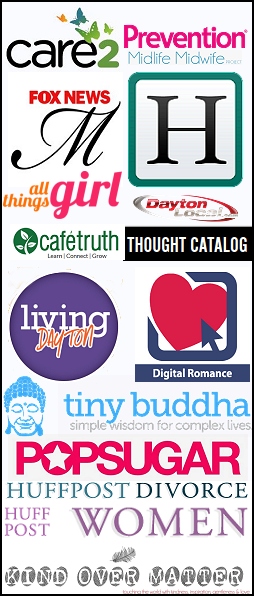Breaking free from destructive patterns can feel like climbing a steep mountain. These cycles, whether emotional, behavioral, or psychological, often feel deeply entrenched, making progress seem frustratingly elusive. People frequently find themselves repeating the same mistakes, reactions, or habits, even when they know those actions are damaging. The good news is that with commitment, awareness, and actionable strategies, it is entirely possible to interrupt these patterns and build healthier ways of living.
Recognizing the Patterns That Keep You Stuck
The first step in changing any cycle is identifying what’s happening. Repetitive behaviors are often automatic, fueled by unacknowledged triggers. Whether it’s impulsive spending, substance use, or emotional withdrawal, each action is usually linked to an unmet need or unprocessed emotion. Recognizing this link requires deep reflection and, at times, professional insight.
Keeping a journal can be a valuable tool here. Writing down recurring thoughts, behaviors, and outcomes often reveals patterns that are easy to overlook in the moment. People who document their experiences frequently report better clarity and an increased sense of agency.
Addressing Underlying Emotional Triggers
Negative cycles are frequently sustained by unresolved emotional wounds. A person might react defensively in relationships due to past betrayals or engage in self-sabotage because of low self-worth. These triggers often stem from earlier life experiences and can operate beneath the surface of conscious awareness.
Therapy or coaching can help unpack these emotional responses. In some cases, cognitive-behavioral therapy (CBT) proves particularly effective. CBT teaches individuals how to reframe negative thought patterns and build healthier cognitive habits. Emotional regulation strategies, such as grounding techniques or mindfulness, further support this effort.
Building New Routines That Replace Old Habits
Breaking a negative cycle requires more than just stopping unwanted behaviors. You must replace them with positive, sustainable routines. Habits thrive in structure, and without an alternative, the brain tends to default to the familiar, even if it’s harmful.
Start by identifying one positive change you can implement immediately. This might include committing to a daily walk, scheduling weekly check-ins with a friend, or preparing nourishing meals. Even modest changes can shift momentum. According to a 2021 study published in the British Journal of Health Psychology, consistent routines significantly improve emotional resilience and reduce stress responses.
Rewiring Your Thought Processes
Thoughts shape behaviors. If your internal dialogue is harsh, fearful, or self-defeating, it will influence your actions. Rewriting this script takes conscious effort. Thought records, positive affirmations, and daily reflection exercises are some of the ways people begin this transformation.
Practicing gratitude helps rewire neural pathways by shifting focus away from what’s going wrong to what’s going well. Neuroscientific research from the University of California, Davis, indicates that individuals who keep gratitude journals report fewer symptoms of depression and anxiety.
Seeking External Accountability and Support
Trying to escape a toxic cycle in isolation can be difficult. Support from friends, family, or professional groups often provides the encouragement and structure necessary for change. People who feel seen and supported are more likely to maintain progress, even when facing setbacks.
You might consider community-based organizations or peer support groups that specialize in the challenges you’re facing. Many communities offer programs that are affordable, inclusive, and welcoming. If you’re struggling with substance use or behavioral addictions, you can find nearby addiction support services to help guide you through recovery. These resources often offer both emotional and logistical support, which is critical when changing deeply rooted behaviors.
Managing Your Environment for Better Outcomes
Environmental cues can be powerful reinforcers of behavior. The people you interact with, the places you frequent, and even the objects around you can either support or hinder your progress. Redesigning your environment to reduce triggers and enhance positive cues is a practical method for breaking unwanted patterns.
This might mean clearing out clutter that contributes to anxiety, limiting time spent with negative influences, or creating dedicated spaces for reflection and rest. By aligning your surroundings with your goals, you reinforce your intentions every day, sometimes without even realizing it.
Developing a Future-Focused Mindset
Focusing on who you want to become rather than who you were allows for growth. Instead of replaying past mistakes, visualize future successes. Visualization is a psychological technique that helps align thoughts, behaviors, and beliefs with your desired outcomes.
Athletes and entrepreneurs often use visualization to prepare for high-stakes scenarios. The same method can help individuals reframe their self-identity. When people believe change is possible, they’re more likely to act in ways that support that belief.
Monitoring Progress Without Obsession
Tracking progress is helpful, but over-monitoring can become another form of self-sabotage. Balance is key. Consider using weekly reflection prompts instead of daily checklists. These broader windows allow for more perspective and reduce anxiety about minor setbacks.
Celebrating small wins reinforces motivation. Whether it’s resisting an urge, setting a boundary, or simply showing up for yourself, these moments matter. Tracking positive behaviors encourages a mindset of growth rather than criticism.
Every step taken toward breaking a persistent negative cycle is a declaration of self-worth.
As you become more mindful of your patterns, build healthier habits, and surround yourself with the right support, the momentum shifts. Progress may not always be easy, but consistency makes it possible. These changes, though gradual, pave the way for a more empowered and stable life.









